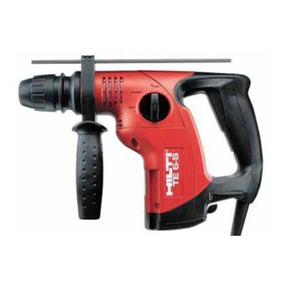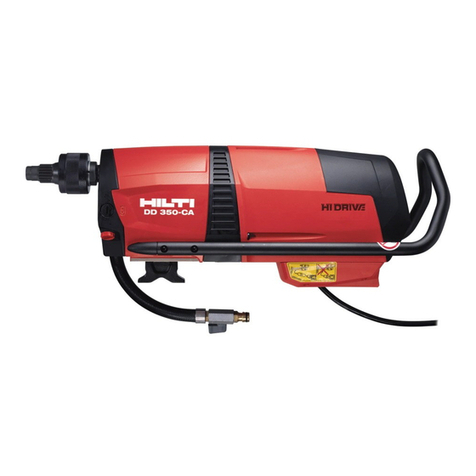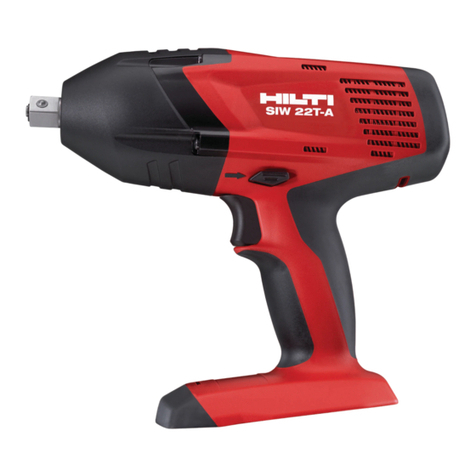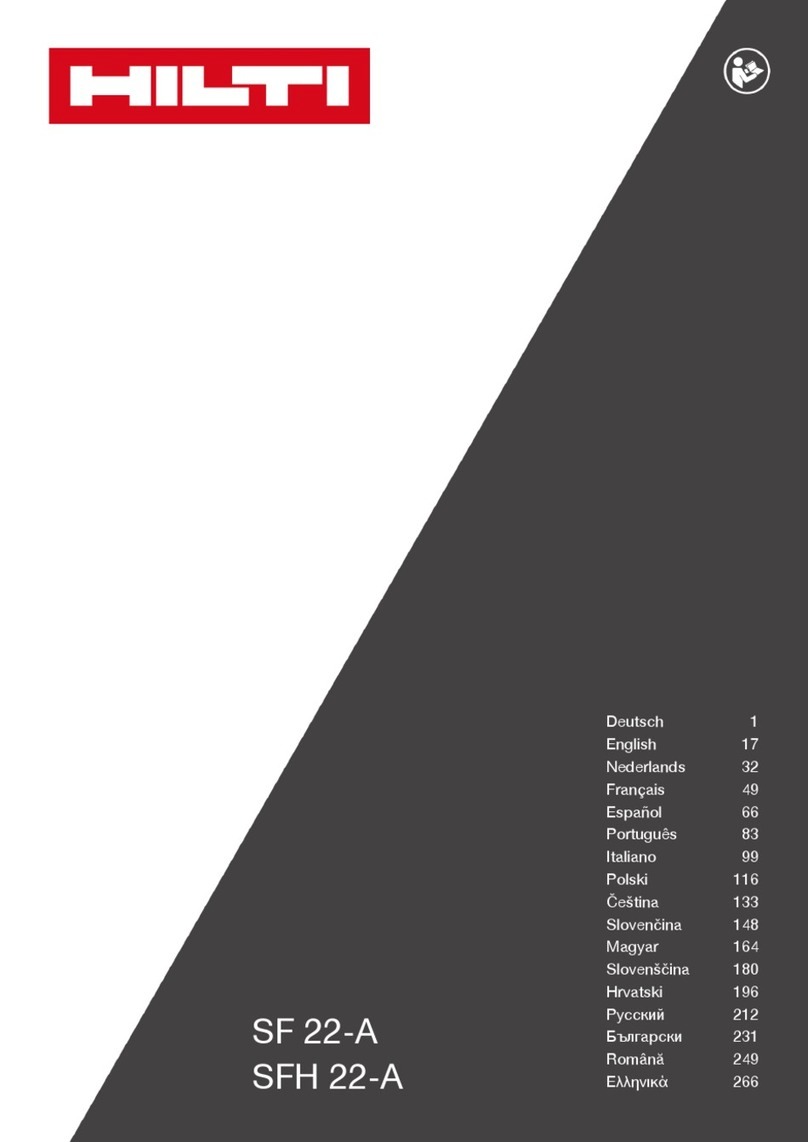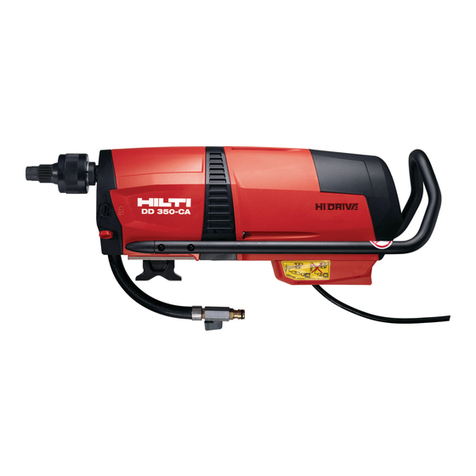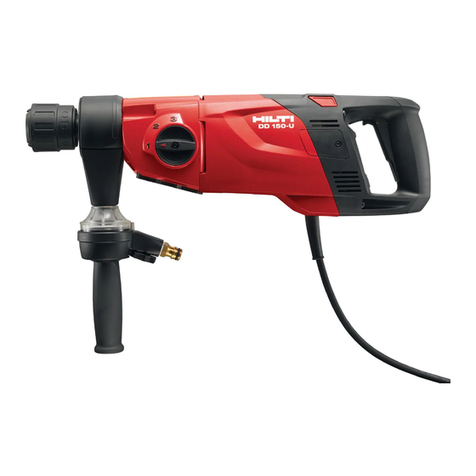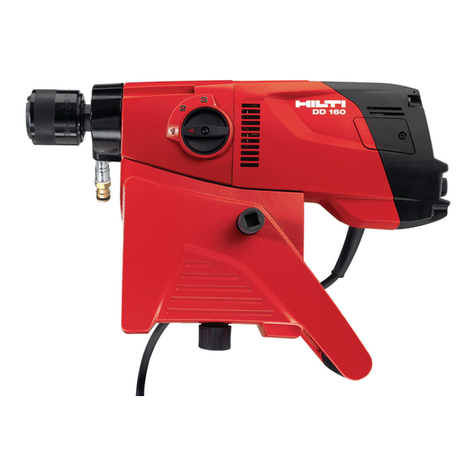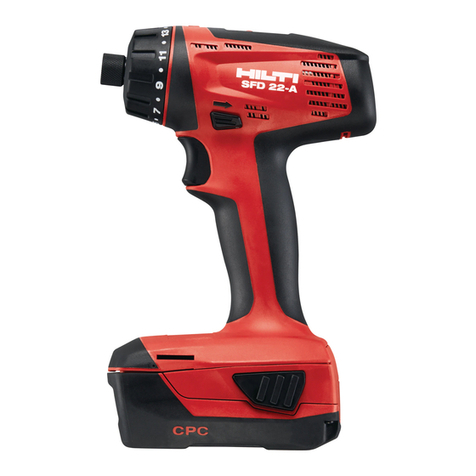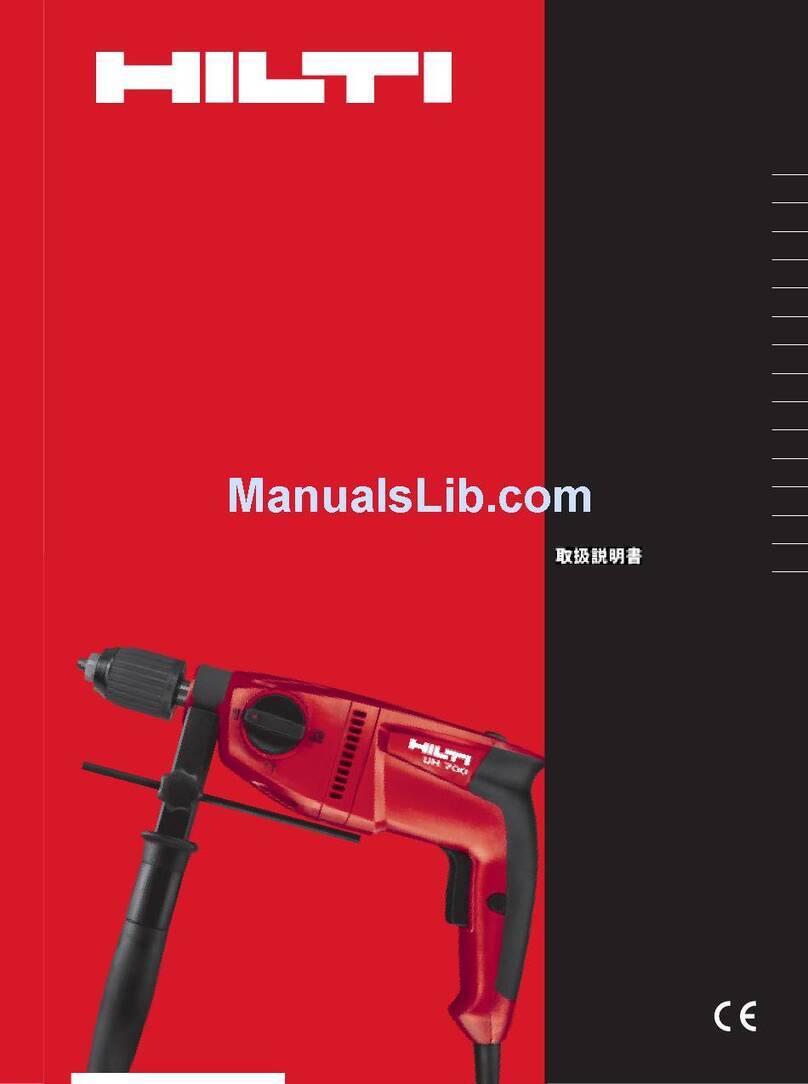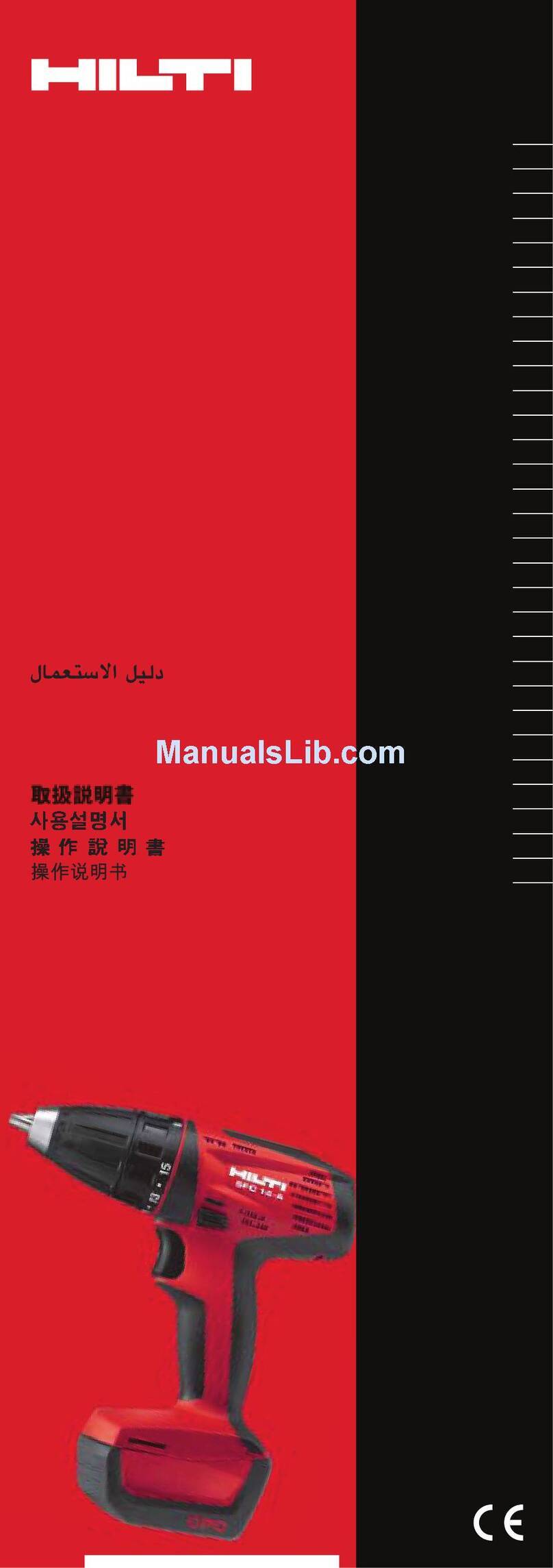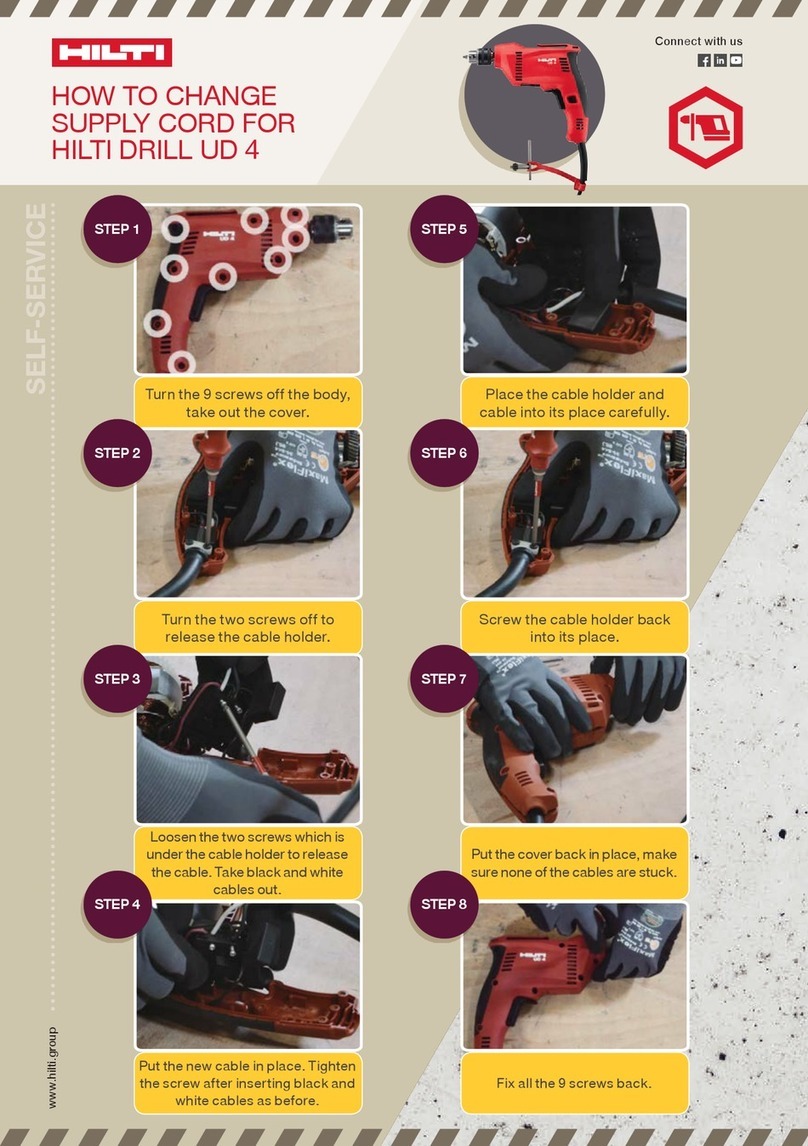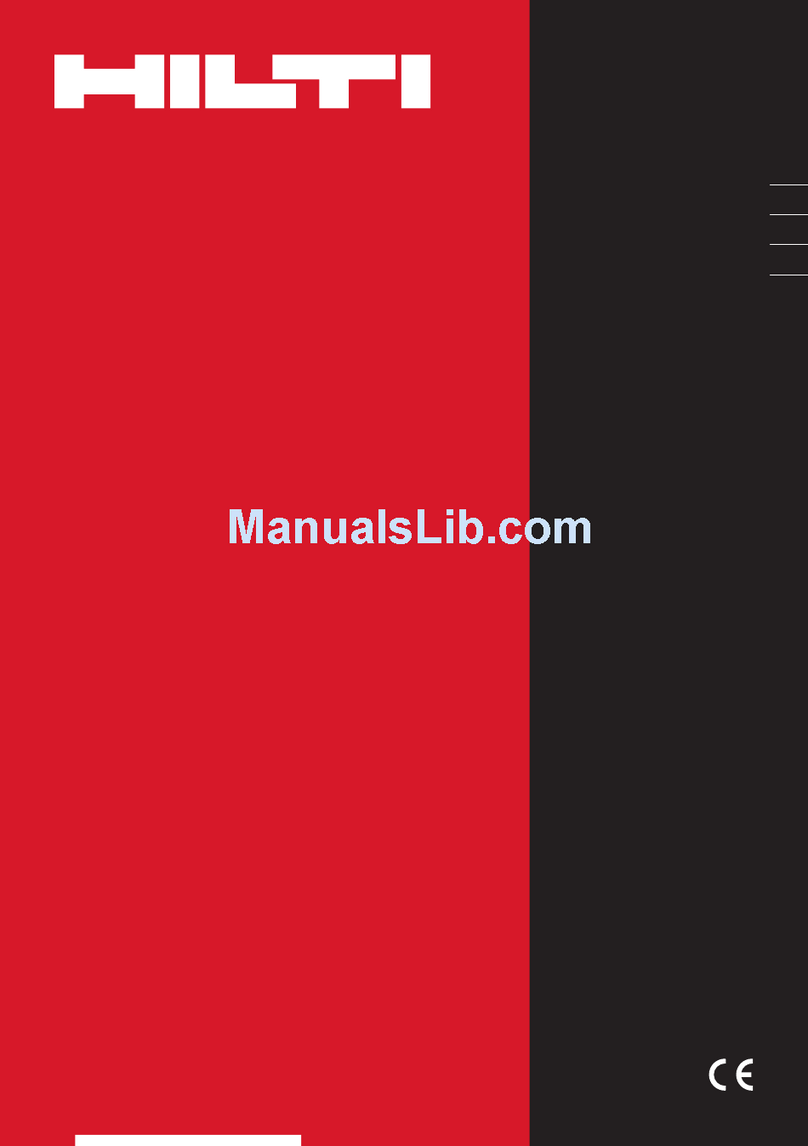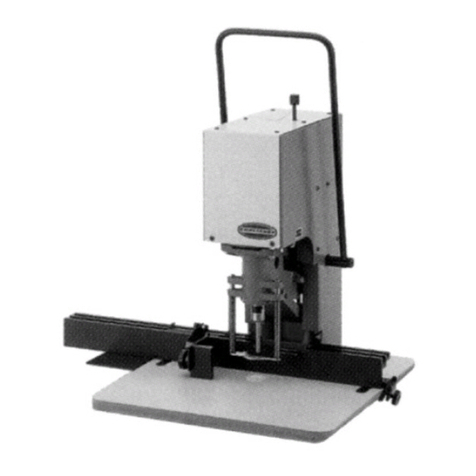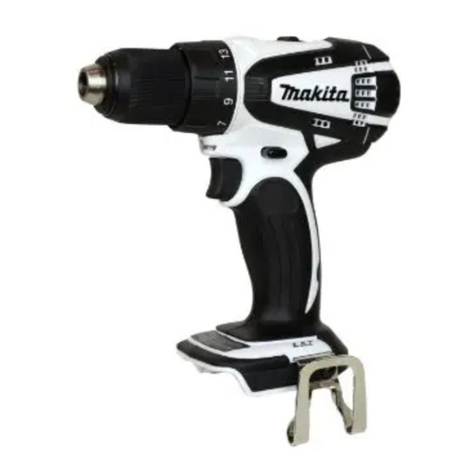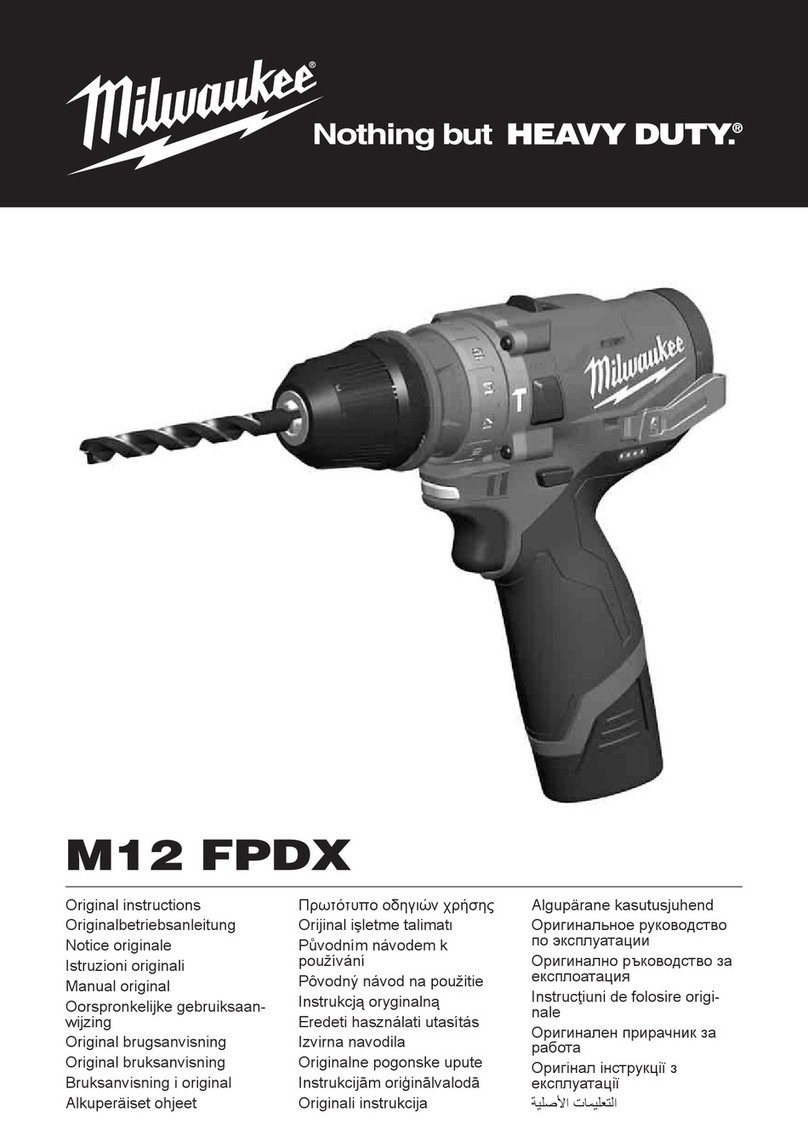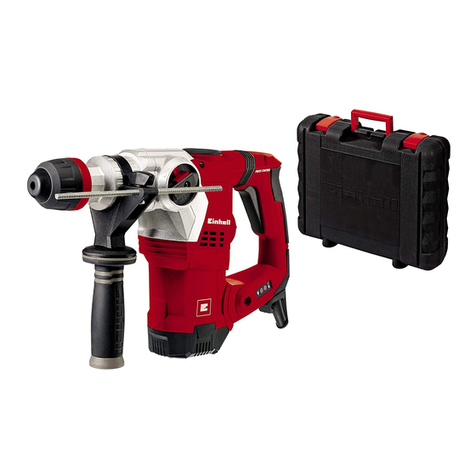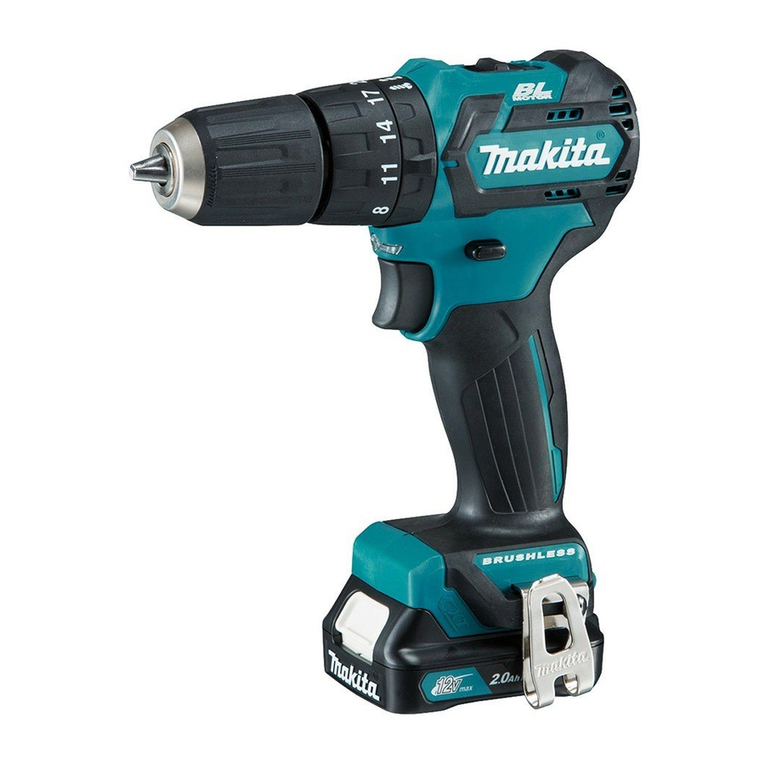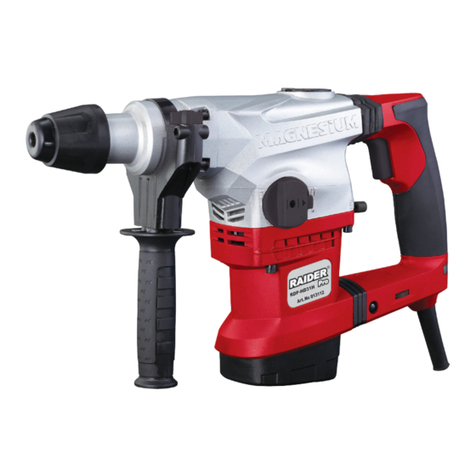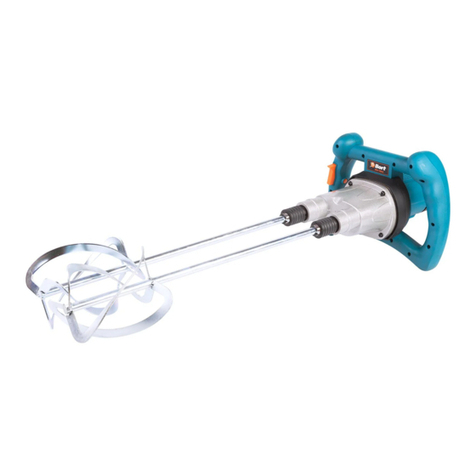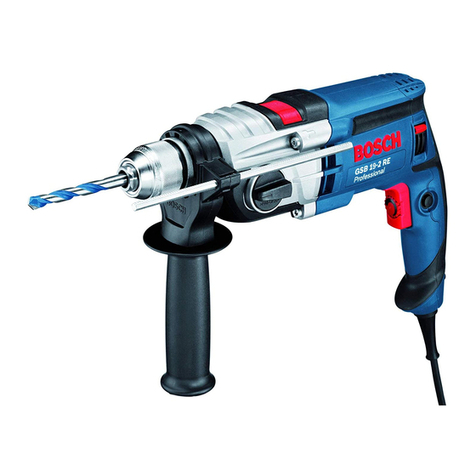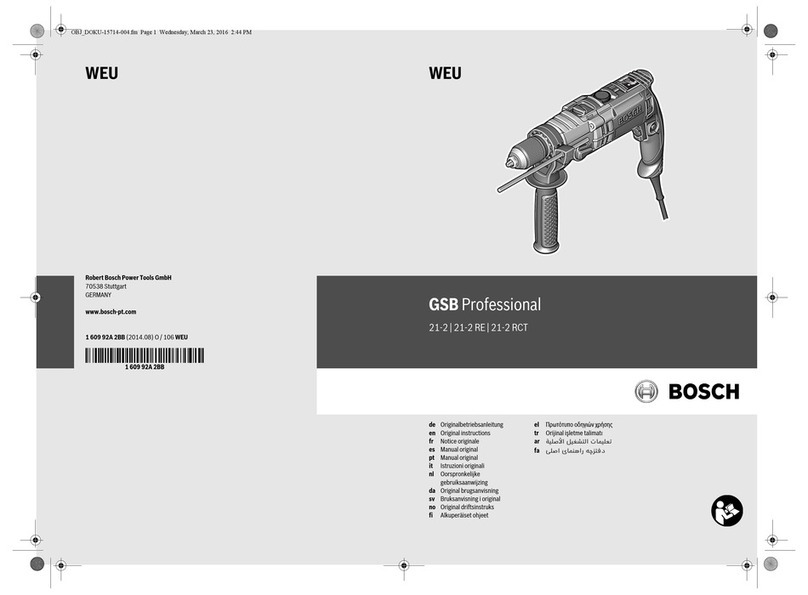3.Personal safety
Stayalert,watch whatyouare doing and usecommon
sense when operating a power tool.Do not use tool
while tired or under the influence of drugs,alcohol,or
medication. A moment of inattention while operating
power tools may result in serious personal injury.
Dress properly.Do not wear loose clothing or jewelry.
Contain long hair.Keep your hair,clothing,and gloves
awayfrommoving parts.Looseclothes,jewelry,or long
hair can be caught in moving parts.
Avoidaccidental starting.Besuretheswitchis off before
plugging in. Carryingtoolswithyourfingerontheswitch
orplugging intools thathave theswitch oninvites acci-
dents.
Remove adjusting keysorwrenches before turning the
tool on. Awrenchor akey thatis leftattached toa rotat-
ing part of the tool may result in personal injury.
Do not overreach.Keep proper footing and balance at
alltimes.Proper footingand balanceenables bettercon-
trol of the tool in unexpected situations.
Usesafety equipment.Alwaysweareyepro-
tection. Dust mask, non-skid safety shoes,
hardhat, orhearing protectionmust beused
for appropriate conditions.
4.Tool use and care
Use clamps or other practical way to secure and sup-
port the workpiece to a stable platform. Holding the
workby handor againstyour bodyis unstableand may
lead to loss of control.
Donot force tool.Usethecorrecttool for your applica-
tion. The correct tool will do the job better and safer at
the rate for which it is designed.
Do not use tool if switch does not turn it on or off.Any
tool that cannot be controlled with the switch is dan-
gerous and must be repaired.
Disconnectthe plug from thepowersource before mak-
ingany adjustments,changing accessories,orstoring
the tool.Such preventive safety measures reduce the
risk of starting the tool accidentally.
Storeidle tools out ofreachof children and otheruntrained
persons. Toolsare dangerousinthehandsofuntrained
users.
Maintaintools with care.Keep cutting toolssharp and
clean.Properly maintainedtools withsharp cuttingedges
are less likely to bind and are easier to control.
Check for misalignment or binding of moving parts,
breakage of parts,and any other condition that may
affectthe tools operation.Ifdamaged,have the tool ser-
viced before using. Manyaccidentsare causedby poor-
ly maintained tools.
Use only accessories that are recommended by the
manufacturerfor yourmodel. Accessoriesthatmay be
suitablefor onetool, maybecome hazardouswhen used
on another tool.
2
General safety rules
Warning! Read andunderstand allinstructions. Failure
tofollow allinstructions listedbelow,may resultin elec-
tric shock, fire and/or serious personal injury.
SAVE THESE INSTRUCTIONS
1.Work area
Keep your workarea clean and well lit. Clutteredbench-
es and dark areas invite accidents.
Do not operate power tools in explosive atmospheres,
suchas in the presenceofflammable liquids,gases,or
dust.Power tools create sparks which may ignite the
dust or fumes.
Keep bystanders,children,and visitors away while
operating a power tool. Distractions can cause you to
lose control.
2.Electrical safety
Groundedtools must be pluggedintoan outlet proper-
lyinstalled and grounded inaccordancewith all codes
andordinances.Never remove the grounding prongor
modify the plug in any way.Do not use any adaptor
plugs.Check with a qualified electrician if you are in
doubt as to whether the outlet is properly grounded.If
thetools shouldelectrically malfunctionor breakdown,
groundingprovides alow resistancepath tocarryelec-
tricity away from the user.
Applicable only to Class I (grounded) tools.
Double Insulated tools are equipped with a polarized
plug (one blade is wider than the other.) This plug will
fit in a polarized outlet only one way.If the plug does
notfit fully in theoutlet,reverse the plug.If it stilldoes
notfit,contact aqualifiedelectrician to install apolar-
ized outlet.Do not change the plug in any way.Double
InsulationZ eliminatestheneedforthe threewireground-
edpowercordand groundedpowersupply system.
Applicable only to Class II tools.
Avoid body contact with grounded surfaces such as
pipes,radiators,ranges and refrigerators.There is an
increased risk of electric shock if your body is ground-
ed.
Don’t expose power tools to rain or wet conditions.
Water enteringa powertool willincrease therisk ofelec-
tric shock.
Do not abuse the cord.Never use the cord to carry the
tools or pull the plug from an outlet.Keep cord away
from heat,oil,sharp edges or moving parts.Replace
damaged cords immediately. Damaged cordsincrease
the risk of electric shock.
When operating a power tool outside,use an outdoor
extensioncord marked "W-A"or "W".Thesecordsare
rated for outdoor use and reduce the risk of electric
shock.


